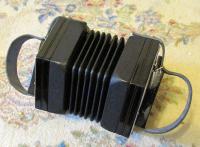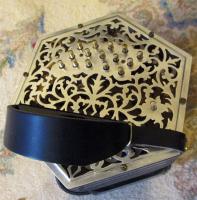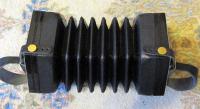
griffinga
-
Posts
35 -
Joined
-
Last visited
Posts posted by griffinga
-
-
Mike, How do I contact you about this? BJ
-
-
Sold for 3500 pounds.
-
Thank you all for your comments!
-
Trying to pin a date of manufacture on a metal-ended 31b anglo concertina by Lachenal - that is numbered 188334.
-
Thanks for that info.
-
Has anyone had a good (or bad) experience with this shop??
http://www.donedeal.ie/brassandwind-for-sale/vintage-concertinas/4231484
-
I've been looking at photos (on the www) of the metal end covers on a variety of old (19th century) concerrtinas (mostly Jeffries, Shakespeare and Crabb). Granted, there aren't that many pics posted and many of the ones that are were taken at an angle so all the details are not visable. The variations in the designs - sometimes subtle and usually not - got me to wondering how these were made back in the day (say last 1/4 19th century). It would be a simple matter (today) to machine press and cut the most intricate design. But what about in 1875? Were the old metal end covers made by machine and the design then cut by hand into them? That would imply that various people were employed by the makers to cut, finish and polish these pieces (most of which are near works of art - in my humble opinion). If that were the case - it would not be surprising to find small differences in the designs (a few slips of the file and you have a slightly different design). Using Jeffries as an example - can someone tell me if the cut design on his earliest metal end covers is the same as the one on his later (say 1890) concertinas - or is that 1890 design the result of various iterations of a pattern over a period of years? Too many questions for one topic - please forgive. Can't seem to find much info on this. Thanks for humoring me.
-
Thank you all. I had a followup question - (in the 19th century) did makers like Crabb, Jeffries and others fabricate (cut, smooth, polish) the metal end pieces for their instruments themselves, or did they contract this to others?
-
I recently acquired a metal-ended 30b anglo that is not marked (on the outside). Looks like 1875-1900 vintage - but it could be older (probably not newer) than that. It has fretwork much like older Jeffries - (no name plate) but is not stamped between the button rows. There are small differences in the fretwork when compared to my other 30b Jeffries. If this concertina was made by Crabb - will it be marked (stamped) inside, or was this not done on all concertinas built by Crabb?
.
-
Anyone have any thoughts on the pros and cons of putting a coat of clear lacquer on metal fretwork?
-
Two different Jeffries - each advertised twice - at the same time!! Better snap one (or two) up before they're gone.
-
-
It all sounds like good advice to me and much appreciated. What's the old saying about fools rushing in? Plenty of time to think about this
before making a commitment. I've worked with old instruments (other than concertinas) for a while and respect efforts to maintain their
original structure and sound.
-
Thanks. I'm thinking about investing in the restoration of a well used (and somewhat abused) Jeffries anglo.
-
Thanks. Any serious problem tuning one in Bb/F to C/G or GD?
-
Does anyone out there know if C. Jeffries (not the son) made more of his anglo concertinas in a specific set of keys (C/G, vs. G/D, etc.) or did he make more or less equal numbers of each of them?
-
Who's playing the lead role?
-
I'm wondering how one goes about identifying a duet concertina. Can it be done based on the
layout of the buttons? I recently looked at a 34 button that had a row of 5 buttons in
the upper row, and below two rows of 6 buttons on each row. The ownder identified it
as an 'anglo', but he doesn't play - so coudn't swear to it.
-
-
This auction house will be offering a number of older Wheatstone English concertinas. Most appear to be in good or better condition.
Shipping to the US might be expensive via a 3rd party.
-
First of all - I'm not an experienced player and have only held three concertinas in my life. That said - this question is about a late-model Wheatstone (1950s) - wooden ends (30b anglo). It makes a very smooth and pleasant sound and I enjoy playing it. However, the handle on the right side interferes with my ability to strike the air button. Rather than being a bit off to one side of the end of the handnrest, the air button is about 1/2inch inwards from the end of the handrest and relatively close to it. Makes it awkward when playing on the lowerst (G) row. Is this arrangement common on Wheatstones in general, only on later models, or maybe only on this particular model?
-
-
Was only listed for a short time.
http://www.ebay.com/itm/281055148920?ssPageName=STRK:MEWAX:IT&_trksid=p3984.m1423.l2649




Jeffries Anglo Concertina C/g 26 Key For Sale
in Buy & Sell
Posted
Hello. Still for sale? BJ